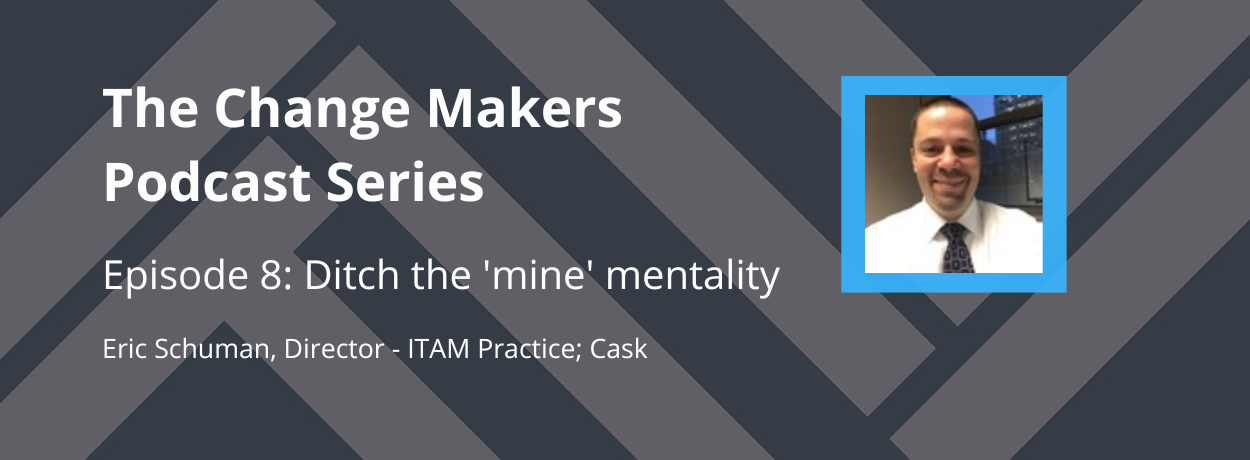We recently had the pleasure of speaking with Eric Schuman who leads the ITAM practice at Cask. To say that Eric is an ITAM enthusiastic, is an understatement. He has a built-in, personal library of ITAM knowledge and skills gained through the past 30 years of working both in-house and as a consultant, and knowledge he’s absolutely willing to share. He loves speaking with asset managers so don’t be shy to reach out to Eric on LinkedIn or through the ITAM Forum.
Eric started out as a mainframe operator and then worked as a Unix administration. He eventually got into Enterprise Architecture and then landed in Asset Management, and he’s never looked back.
Here are some of the best takeaways from Eric’s podcast episode, which we hosted in partnership with the ITAM Review.
Always be honest with your clients
10% of Eric’s career, to date, has been on the consulting side. When he made the transition from client-side to consulting, he drew on his experience working with consultants and those he had the highest regards for – those who weren’t afraid to tell him they didn’t know.
“You need to make sure you’re always being honest with your clients. I’m sure we’ve all come across partners and consultants that give you the ‘yes’ answer even if something cannot be done. Sometimes it just can’t. Sometimes you have to look at different options.”
Ditch the ‘mine’ mentality
Eric’s team sees the ‘mine’ mentality quite a bit within organisations where there are lots of pocket areas that continue to buy their own hardware and/or software and won’t relinquish that to a centralized asset management or procurement team.
“This creates a huge waste of corporate dollars. With this, you cannot get volume discounts, you won’t know who needs what or when, etc.”
If this describes the organisation you work for, Eric recommends that you try to get at least the biggest bulk of your highly-utilised software into the hands of a centralized group and manage it at a pool level rather than at a department level. Doing that enables you to do things like auto harvesting so you have licenses available as and when needed, and no one has to wait for a license.
You may have to spend some money to save some money
What? Yes, we all know that ‘cost savings’ is one of the business benefits of ITAM. But sometimes, you have to spend some money to save some money.
“If you need to do a true up or buy extra, that will cost you a bit more upfront, but you will make savings in the long term.”
And, if you’re just starting out, and you’re able to save on hardware and on software, you may start to eventually see a decline in savings. This is normal. This doesn’t mean you’re doing things wrong.
“When someone stands up an asset management practice, I tell them to account for everything. Account for all savings, and all types of savings, ongoing. It’s not just about the cost of the software. It’s also about the teams that have to manage the software.”
Listen now to the full 25-minute podcast.
Hosts: AJ Witt and Jennifer Carr
Other episodes in The Change Makers podcast series:
- Get out there and see what more ITAM can do (20 minutes)
- Do you see your ITAM weaknesses? (21 minutes)
- What problems do you want to solve? (19 minutes)
- What was ITAM called in the 1980s? (18 minutes)
- ITAM and ITSM are critical for any organisation (11 minutes)
- The parallel between mixed martial arts and ITAM (14 minutes)
- I love the ITAM journey I’m on (20 minutes)

